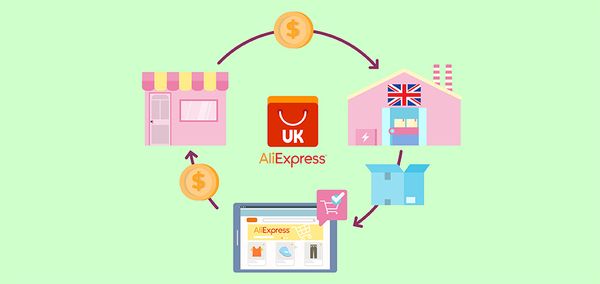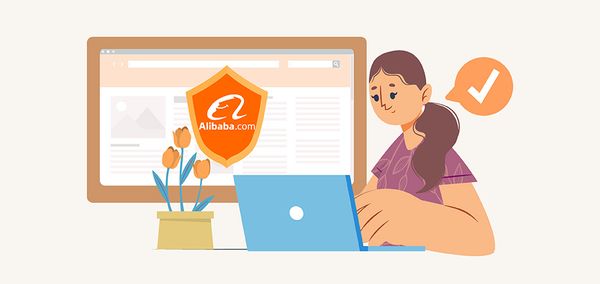Headless Commerce: The Next Big Trend in the eCommerce Space

As the present digital landscape is moving towards social and other interactive platforms, the way we sell products is also changed. These days, more companies are embracing the concept of headless commerce. After all, the framework lets us reach out to our customers holistically beyond a traditional model.
Though, you might be wondering what is headless eCommerce and how does it work? Here’s everything you need to know about this new eCommerce model and how you can make the most of it.
Headless Commerce 101: Things to Know
In the traditional eCommerce framework, the frontend of a store (mostly its website) is closely associated with its backend. On the other hand, headless commerce decouples the frontend (head) of the store from its backend functions.
This lets us configure and present the front (or head) of the store in different ways – via social commerce, digital marketplaces, and IoT. The best part about headless eCommerce is that it can be altered individually to provide a unique experience to your customers.

To achieve this, a set of APIs or its dedicated layer is established between the front and the backend of the platform. The API can digitally transform the overall experience for any user depending on their devices and targeted metrics.
Why You Should Also Embrace Headless Commerce
Do you know that more than 60% of retailers have either moved to the headless framework or are planning to adopt it? Therefore, if you are not sure whether this is the right solution to follow, then consider going through its key benefits.
Faster performance
One of the key factors for adopting headless commerce is related to the overall performance of your store. Since the frontend would be decoupled from the backend, it will lead to a faster loading time of your store.
Flexible frontend
As I have listed above, headless eCommerce can help you present a customizable experience to your customers. This will help you stand out from the crowd and provide a more unique experience to your customers.
Improved marketing tactics
Another vital benefit of implementing headless commerce solutions is the integration of various marketing plugins. Using these tools, you can individually target your customers through different stages of the marketing funnel.
Other factors to consider
Apart from that, the headless framework would let you implement a microservice architecture in your store. It will also improve the overall security of your online store while providing complete ownership of it.

How to Implement Headless Commerce Solutions
Headless commerce is all about working on an experience-led and customized framework for your audience. To do this, you need to integrate your CMS (Content Management System) with the needed APIs (Application Programming Interfaces).
Step 1: Focus on a Scalable Backend
The first thing you need to do is check whether your backend supports headless eCommerce architecture or not. The good thing is that most of the content management systems and eCommerce providers like Shopify, BigCommerce, WooCommerce, and Magento support it. If your commerce platform doesn’t support vertical scalability, then you can consider migrating your store to any other service as well.
Step 2: Integrate the Needed APIs
To work on headless commerce solutions, you need to implement a dedicated layer of APIs between the front and backend of your store. There are several Angular JS, React, and other customizable APIs that are readily available. These solutions will let you implement A/B testing and scale the front end of your store based on numerous configurations.
Step 3: Test Your APIs & the Frontend Implementation
Once you have implemented the APIs, you can consider testing them on different platforms. To do this, you can simply access the implemented solutions on platforms like web, social, AR, voice assistant, mobile, chatbots, and so on. Make sure that you perform thorough testing of the headless commerce solutions before you make them available for your customers.

While transitioning from a traditional to a headless model might seem a bit complicated at first, it will certainly be worthy in the long run. You can work on the transition on your own, take the assistance of an expert, or use readily available solutions as well.
Popular Headless Commerce Examples to Learn From
You might already know that thousands of eCommerce brands and stores have already embraced the headless commerce framework. Here are some of the leading headless commerce examples that would help you understand the real-world implementation of the model.
1. Nike
Nike was probably one of the first brands to implement headless commerce solutions for their mobile customers. The company took the assistance of technologies like React SPA and Node JS to provide a headless experience on mobile devices. This drastically improved their conversion rates for customers from handheld devices.

2. Dunkin’ Donuts
One of the major benefits of following a headless approach is that we can easily scale our business on numerous platforms. This is what Dunkin’ Donuts also did by integrating its backend solutions with voice assistants like Siri, Alexa, and Google Assistance. For instance, you can just take the assistance of Google Assistance and directly place your orders from Dunkin’ Donuts via its AI-integrated features.

3. Koala
If you are from Australia, then you might have already heard of Koala, which is a household furnishing brand. While the brand is already quite profitable, it wanted to scale its overall reach. To do that, they took the assistance of Shopify Plus and came up with dedicated web applications. It helped them segment their customers based on different platforms and other parameters. By providing a unique and customized experience to their audience, they could easily boost their conversion rates.

4. Home Depot
Augmented reality is one of the most untapped markets of the present time. Though, if you want to explore it, then you can easily integrate reliable headless commerce solutions to your store’s frontend. Home Depot also did the same a while back by implementing 3D visuals and AR features on the app. Now, users can simply select a product and check how it would look at any preferred space before buying it.

5. Sephora
Sephora is one of the biggest beauty and lifestyle brands in the world that has also embraced the headless commerce framework. For example, if you visit their Instagram or Facebook page, you can get a detailed catalog of their products. If you want, you can directly order products from their social media accounts without even visiting their website. This was made possible by decoupling the backend of their store and integrating it with social platforms via a headless approach.

Take Your Store to the Next Level with DSers
Apart from implementing headless commerce solutions to your store, you can also take the assistance of DSers to improve its performance. It is the official AliExpress dropshipping tool that is easy to integrate and offers a wide range of features.
| Get Started Now to Grow Your Online Business with the Best AliExpress Dropshipping Tool - DSers! |
- You can browse thousands of different suppliers in numerous categories on DSers.
- With its Supplier Optimizer feature, you can instantly pick the most profitable and best-rated supplier for any product.
- It is extremely simple to integrate DSers with other tools like Shopify, WooCommerce, and Wix.
- DSers is available for free and offers resourceful solutions like bundle products, bulk purchasing, or store management.
- You can also automate things via DSers by using its features like automatic tracking or order status or syncing of tracking numbers.
Over to You!
There you go! I’m sure that after reading this guide, you’d know more about headless commerce and its benefits. Since the traditional eCommerce model might not let you scale your store horizontally, you can consider switching to headless eCommerce.
You can further explore the headless commerce examples I have listed above to understand their model. Besides that, to empower your dropshipping store and manage everything in one place, you can also check DSers. It is one of the best dropshipping solutions out there that can easily be integrated into various commerce platforms.
FAQs
What is headless eCommerce?
It is a popular eCommerce architecture in which the frontend of the store is decoupled from the backed. This lets us scale our store on different platforms and provide a customized experience to users.
What are the benefits of headless commerce?
A headless architecture can help you expand the overall reach of your business. It can also boost the results of your marketing plans, help in lead conversion, and provide faster services to customers.
What are some reliable headless commerce tools?
Some of the most popular and reliable tools that you can use to follow a headless approach are Shopify Plus, BigCommerce, Magento, Gumroad, and Commerce JS. Apart from that, you can also consider exploring API-oriented solutions like Apicart, Foxy, Vue, Shogun, and Bloom Reach.













 Company
Company
 Why Choose DSers
Why Choose DSers
 Blog
Blog
 Help Center
Help Center




 Live Chat
Live Chat